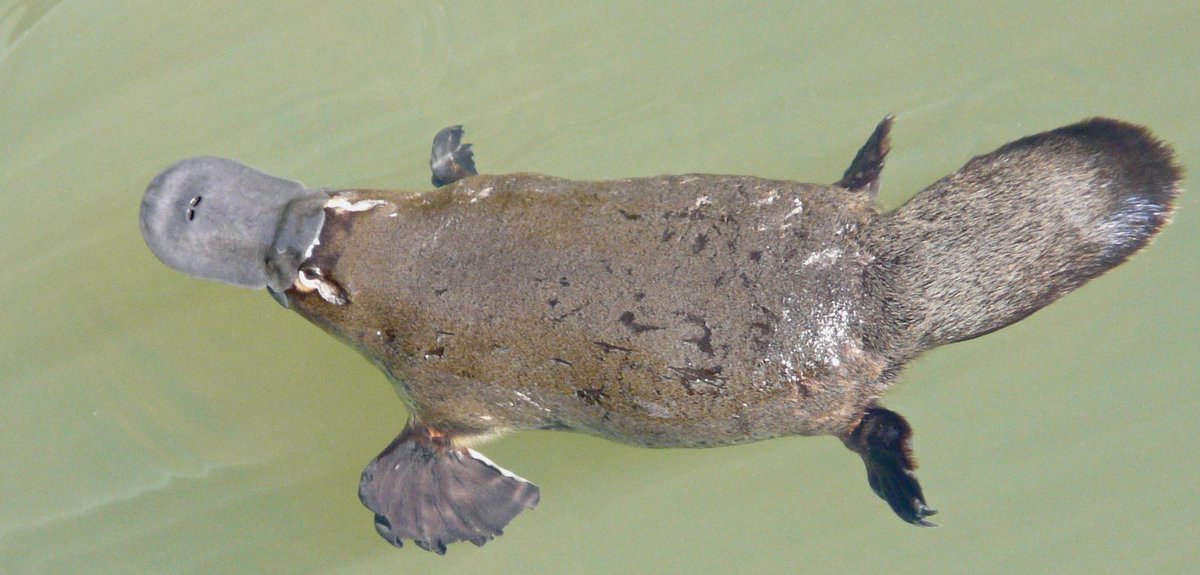


"But as weird as this animal looks, its genome sequence is priceless for understanding how mammalian biological processes evolved," Collins said in a statement. National Human Genome Research Institute, which funded the study. "At first glance, the platypus appears as if it was the result of an evolutionary accident," said Francis S. Males have venom-filled spurs on their heels. But it also has bird and reptile features - a duck-like bill and webbed feet, and lives mostly underwater. Philosophical Transactions of the Royal Society of London B: Biological Sciences, 353(1372), 1063-1079.The platypus is classed as a mammal because it has fur and feeds its young with milk. New information about the skull and dentary of the Miocene platypus Obdurodon dicksoni, and a discussion of ornithorhynchid relationships. Where did the other platypus species (i.e., Obdurodon) go? Could Noah not fit them or their eggs on his ark? Is it a coincidence that there are fossil platypuses that had teeth as adults, much like typical mammals, but modern platypuses replace them during development with horny pads?ġ. With Obdurodon, we have support for this hypothesis, with evidence that a toothed ancestor preceded the modern platypus dental condition.

Modern platypuses have teeth when they are very young, but shed these by adulthood and replace them with horny pads (see below).Ĭonsidering these horny pads are a very uncommon feature in mammals, and vertebrates as a whole, biologists interpret it as an evolutionary novelty. Clearly the duck-like bill has been around for a while! However, at least one feature points to Obdurodon being a transitional fossil, namely the fact that it has teeth. You’ll notice differences between the two, but overall they look extremely similar. Below you can see a comparison between Obdurodon dicksoni (left 23-11.6 million years ago) and the modern platypus (right). Obdurodon includes several species of platypus-like monotremes that are estimated to have lived ~28.1 to 5.3 million years ago. However, at least one fossil animal gives some insights into their ancestry. Unfortunately, the specimens are extremely fragmentary, frequently consisting of only part of a jaw or arm, preventing researchers from making many firm conclusions about their evolution. What the evidence points to pretty clearly is this: 1) they’re mammals, as they have hair, produce milk for their young, and their DNA is much more similar to other mammals than it is to, say, birds or lizards, and 2) they split from other mammals a long, long time ago, somewhere on the order of 220 million years. The fossil record of their relatives, known as monotremes, is extremely spotty, with the earliest dating to over one hundred million years ago. To be sure, there are a lot of gaps in our knowledge regarding how they might have evolved. In fact, I recall a creationist acquaintance of mine once declaring that they must be an “evolutionist’s worst nightmare”. Given the idiosyncrasies of this animal, you might imagine that they’re a bit of an enigma to evolutionary biologists. In college, I had a t-shirt that made light of their bizarre features. When a drawing and a pelt of the animal were first sent to British scientists at the end of the 18th century, the incredulous naturalists assumed it was a hoax. They have hair, webbed feet, a beaver-like tail, and duck-like bills with which they can sense electrical currents, they lay eggs, and the males possess venom glands on their hind limbs. Platypuses are strange creatures, even to evolutionary biologists.


 0 kommentar(er)
0 kommentar(er)
